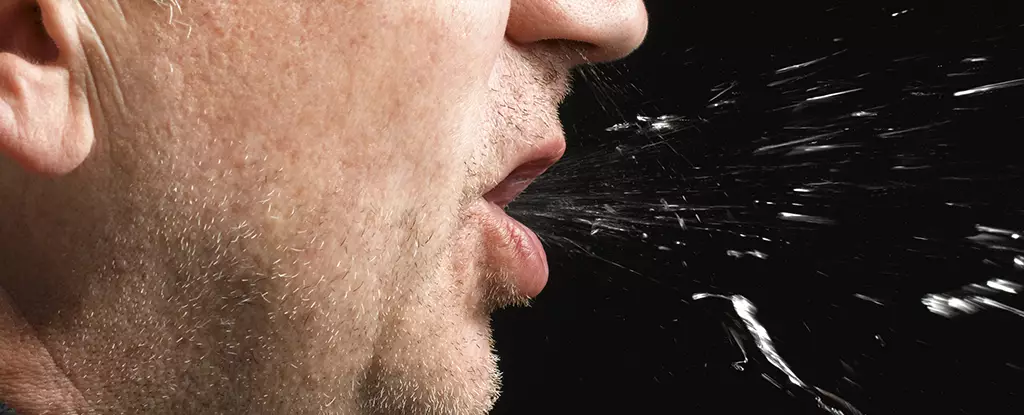In the realm of infectious diseases, understanding the dynamics of droplet transmission has gained unprecedented significance, particularly highlighted by recent global health crises. The spread of viruses through respiratory droplets can have serious implications for public health, making the assessment of how far and wide these droplets can travel crucial for devising effective containment strategies. Groundbreaking experiments conducted in a French laboratory have shed light on this subject, offering nuanced insights that could influence future public health guidelines.
Innovative Research Methodology
To delve deeper into how respiratory droplets travel in diverse situations, researchers enlisted 23 volunteers for a series of tests involving normal speaking, coughing, and breathing, both with protective masks and without. The methodology employed was sophisticated, utilizing the Interferometric Laser Imaging for Droplet Sizing (ILIDS) technique, which facilitates accurate measurements of droplet size and velocity using high-speed cameras and laser technology. This experimental framework not only increases precision but also paves the way for understanding complex behaviors of droplets post-emission, which is essential for mitigating disease transmission.
The study’s authors stress the importance of their findings, noting that a comprehensive characterization of exhaled droplet size distribution has been sorely lacking, leading to inconsistencies across various research publications. This indicates a need for improved methodologies and collaborative efforts in research.
Analyzing the Data: Size and Movement of Droplets
One of the most revealing aspects of the study was its observation of droplet sizes. Talking and coughing produced droplets ranging anywhere from 2 to 60 micrometers, while normal breathing produced significantly smaller droplets between 2 and 8 micrometers. It was particularly alarming to note that coughing generated droplets traveling at far greater speeds and concentrations, emphasizing the need for vigilance during respiratory events. Furthermore, the data revealed interesting patterns in droplet movement, with breathing exercises yielding more vertical and horizontal dispersion, while talking and coughing presented a more concentrated jet of droplets.
The application of masks demonstrated a marked reduction in droplet transmission, showcasing their effectiveness. Surgical or tissue masks managed to block between 74 and 86 percent of exhaled droplets, a statistic that underscores the importance of masking in public health strategies, particularly in high-risk environments.
Variability Among Individuals: The Superspreader Phenomenon
A fascinating revelation in the research was the variation in droplet size and velocity among the participants, which echoes the growing concern surrounding superspreaders—individuals who contribute disproportionately to the spread of disease. The study indicated that not only did measurements significantly differ from one volunteer to another, but also showcased variability within repeated tests of the same individual. Such findings necessitate a deeper exploration into the relationship between individual factors—like facial structure—and droplet emission dynamics. This insight is crucial, as it could dictate future public health responses, particularly around resource allocation for testing and preventive measures.
Future Directions: Expanding Research Horizons
As the research team looks forward, they are eager to expand their sample size and include a wider range of demographic factors in future tests. This can provide deeper insights into how environmental conditions and individual characteristics affect droplet behavior. Their call for community engagement highlights a significant step: understanding how adherence to guidelines such as mask-wearing can practically influence droplet dynamics in real-world settings.
Such nuanced research not only promises to inform future public health policies but also aims to empower both citizens and health professionals with data-driven insights that can aid in making informed decisions. The ongoing experimentation and data collection emphasize the complexity of droplet transmission and the interconnectedness of behavior, environment, and public health. This vital work can ultimately contribute to a more robust response to infectious disease outbreaks, ensuring that communities are better protected in the face of uncertainty.
With continued efforts in measuring the intricacies of droplet dynamics, we may be on the cusp of a new era in epidemiological research, where data and observation translate directly into life-saving interventions.


Leave a Reply